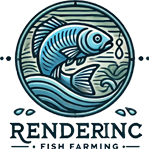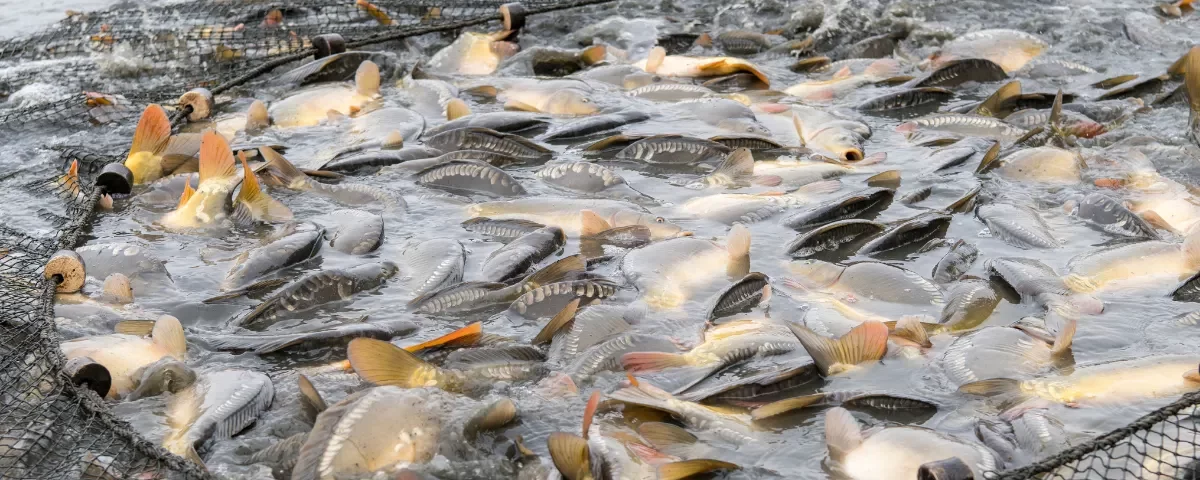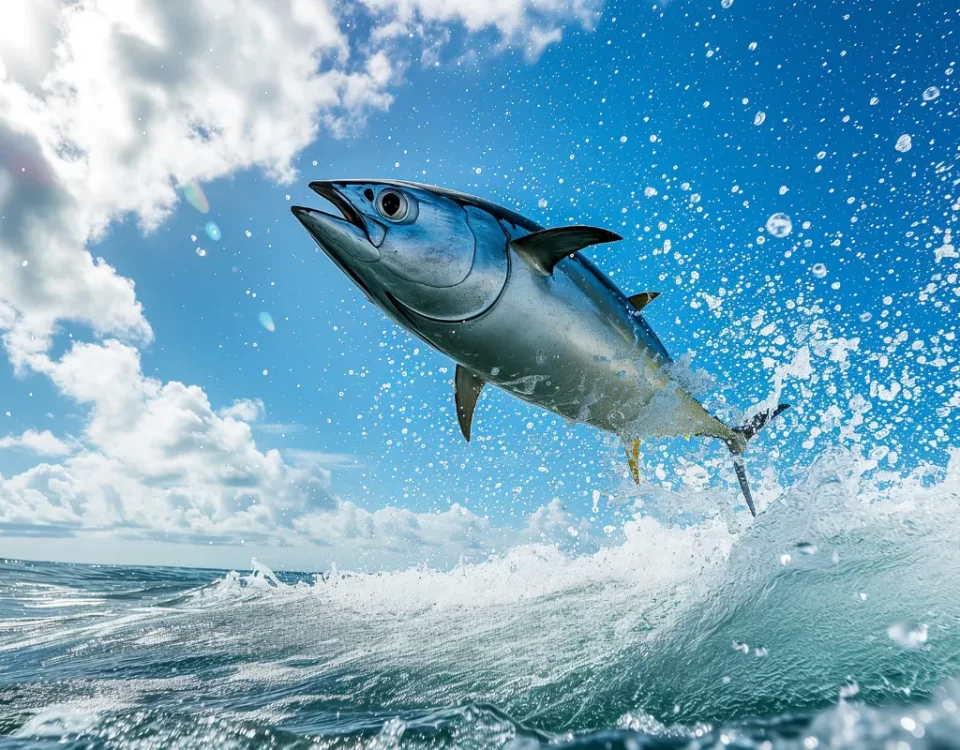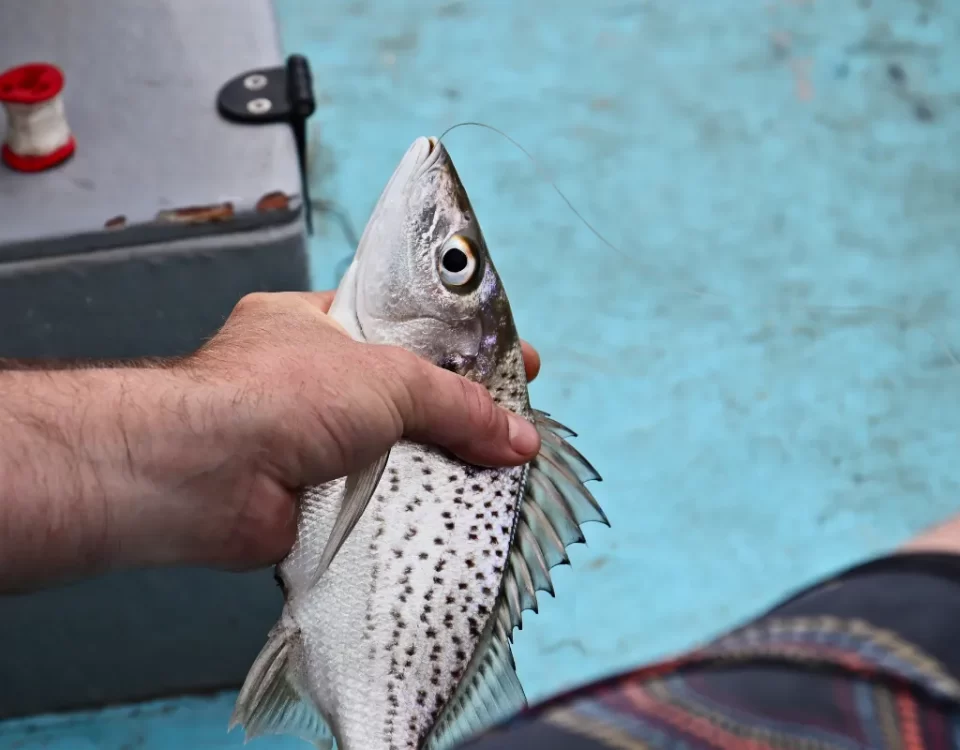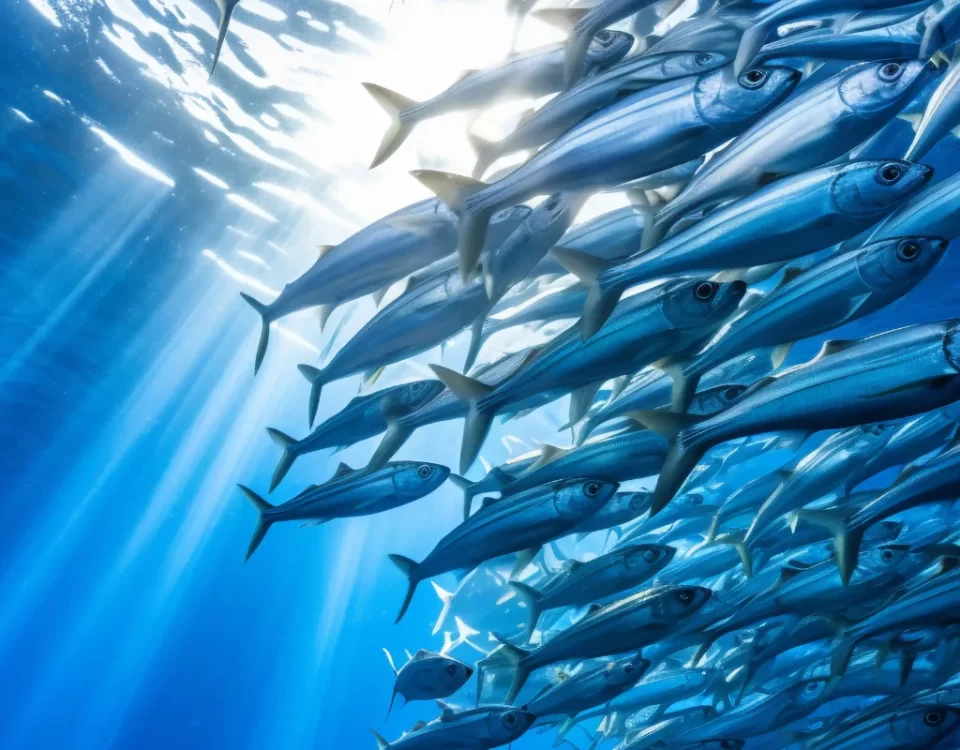How to Monitor Fish Growth and Optimize Production

Balancing Ecosystems in Aquaculture for Maximum Sustainability
agosto 21, 2024
Smart Sensors in Aquaculture: Monitoring Fish Health and Water Quality
agosto 22, 2024In the realm of fish farming, the monitoring of fish growth and optimization of production are paramount. A keen understanding of how these aspects intertwine is essential for the success and sustainability of any aquaculture endeavor. While it may seem like a straightforward process to raise fish in captivity, the reality is that meticulous monitoring and strategic production practices can make a significant difference in the overall health of the fish population and the profitability of the operation.
Efficient monitoring of fish growth involves keeping a close eye on various parameters such as growth rate, feed conversion ratios, and environmental conditions. By closely tracking these factors, fish farmers can make informed decisions on feed management, disease prevention, and overall stock management. This level of attention to detail not only ensures the well-being of the fish but also directly impacts the economic success of the fish farm.
Proper monitoring doesn’t stop at just observing the growth of the fish. It extends to the broader scope of production optimization. This entails maximizing the output of the fish farm while minimizing costs and reducing environmental impact. Through the strategic allocation of resources, such as feed, water quality management, and stocking densities, production can be streamlined to achieve the best possible results.
The correlation between effective monitoring of fish growth and optimization of production cannot be overstated. By implementing robust monitoring protocols and refining production techniques, fish farmers can not only enhance the health and growth of their fish but also pave the way for increased profitability and sustainability within the aquaculture industry.
Understanding Fish Growth
Fish growth is a complex and fascinating process influenced by a multitude of factors that interact in intricate ways. Water quality plays a pivotal role in fish growth, as poor water conditions can lead to stress and hinder their development. Factors such as dissolved oxygen levels, pH balance, and presence of toxins can directly impact the overall health and growth of the fish population. It is essential for fish farmers to maintain optimal water parameters to support healthy growth.
Temperature is another critical factor that significantly affects fish growth. Different species of fish have specific temperature ranges within which they thrive and grow optimally. Fluctuations outside these ranges can slow down growth rates and even lead to health issues. Monitoring and maintaining stable water temperatures are essential to ensure consistent and healthy growth in fish populations.
Feeding practices also play a vital role in fish growth. Providing a nutritionally balanced diet in appropriate quantities is key to promoting optimal growth rates. Overfeeding can lead to water quality problems and health issues, while underfeeding can stunt growth. Understanding the nutritional needs of different fish species and adjusting feeding regimes accordingly is crucial for maximizing growth potential.
Genetics is another crucial factor influencing fish growth. Selective breeding programs have been developed to enhance growth rates, disease resistance, and other desirable traits in fish populations. By selecting individuals with favorable genetic characteristics for breeding, fish farmers can potentially improve the overall growth performance of their stocks. Understanding the genetic makeup of fish populations is essential for optimizing production efficiency and ensuring sustainable growth.
Monitoring fish growth through regular measurements and tracking growth rates over time is essential for identifying any potential issues early on. Detecting deviations from expected growth patterns can help fish farmers take corrective actions promptly, such as adjusting feeding regimes, optimizing water quality parameters, or even reevaluating breeding strategies. By closely monitoring fish growth and being proactive in addressing any issues that arise, fish farmers can optimize production efficiency and ensure the overall health and well-being of their fish populations.
Tools for Monitoring Fish Growth
In the realm of fish farming, monitoring fish growth is a crucial aspect that directly correlates to the overall production efficiency and profitability of the operation. By utilizing an array of innovative tools and techniques, fish farmers can gain valuable insights into the growth patterns of their aquatic livestock. Let’s delve into the diverse tools available for monitoring fish growth and optimizing production.
Electronic Tags
Electronic tags, also known as tags or transponders, are sophisticated instruments that allow for the tracking and monitoring of individual fish within a population. These tags are implanted into the fish and can relay important data such as growth rate, behavior patterns, and environmental interactions. One of the key advantages of electronic tags is their ability to provide real-time data without human intervention. However, the high cost associated with these tags can be a limiting factor for some fish farming operations.
Underwater Cameras
Underwater cameras have revolutionized the way fish growth is monitored in aquaculture settings. These cameras can capture high-resolution footage of fish in their natural environment, allowing farmers to observe their feeding habits, swimming behaviors, and overall growth progress. The visual data obtained from underwater cameras can offer valuable insights into the health and condition of the fish population. However, factors such as water clarity and camera placement can affect the accuracy of the data collected.
Manual Measurements
Traditional manual measurements remain a fundamental tool for monitoring fish growth in aquaculture. By physically measuring key growth indicators such as length, weight, and girth, farmers can track the development of individual fish over time. Manual measurements are cost-effective and provide a hands-on approach to monitoring fish growth. However, this method can be time-consuming and subject to human error, making it less efficient for large-scale operations.
Choosing the Right Monitoring Tool
When selecting a monitoring tool for fish growth, it is essential to consider the specific requirements of the fish species being cultivated. Each tool has its own set of advantages and limitations, so choosing the right tool depends on factors such as budget, scale of operation, and desired level of detail. Electronic tags may be ideal for tracking individual fish in a research setting, while underwater cameras could be more suitable for observing group behaviors in a commercial farm. By understanding the pros and cons of each monitoring tool, fish farmers can optimize their production processes and ensure the health and growth of their aquatic stock.
Data Collection and Analysis
In the realm of fish farming, where precision and efficiency are paramount, the vigor of data collection and analysis reigns supreme. The act of assembling accurate and reliable data serves as the cornerstone for monitoring fish growth with precision and optimizing production yield to its full potential.
Importance of Collecting Accurate Data
The essence of collecting precise and reliable data in monitoring fish growth cannot be overstated. It is the lifeblood that nourishes the insights necessary for steering production in the right direction. By meticulously recording metrics such as fish weight, length, feed consumption, water quality parameters, and environmental conditions, fish farmers acquire a comprehensive understanding of their stock’s development. This data treasure trove not only aids in monitoring individual fish growth but also unveils overarching trends that can guide strategic decisions to enhance production and efficiency.
Tips for Effective Data Analysis
Once the data is diligently amassed, the art of data analysis takes center stage in unraveling the mysteries hidden within. To track growth trends accurately and identify meaningful patterns, employing effective analytical techniques is critical. Utilizing tools such as statistical software, data visualization methods, and trend analysis algorithms can illuminate subtle nuances in the data that might escape casual observation. By delving deep into the numbers, fish farmers can discern correlations between various factors, anticipate growth trajectories, and pinpoint areas where optimization efforts can yield the greatest returns.
Leveraging Data for Informed Decisions
Armed with a wealth of meticulously collected data and insightful analyses, fish farmers possess the power to make informed decisions that can significantly impact production outcomes. By integrating data-driven insights into their decision-making process, farmers can fine-tune feeding regimes, adjust stocking densities, optimize water quality management practices, and implement targeted interventions to foster optimal fish growth. This analytical approach not only boosts production efficiency but also mitigates risks, enhances sustainability, and paves the way for continuous improvement in fish farming practices.
Feeding Practices for Optimal Growth
Ensuring proper feeding practices is essential for maximizing fish growth and optimizing production in a fish farming operation. Implementing different feeding strategies and utilizing specific feed formulations tailored to the nutritional needs of the fish species being cultivated can significantly enhance growth rates.
Variability in Feeding Strategies
Fish farmers have several feeding strategies to choose from, including ad libitum feeding, restricted feeding, and demand feeding. Ad libitum feeding involves providing unlimited access to feed throughout the day, allowing fish to eat as much as they desire. On the other hand, restricted feeding involves providing fixed feeding intervals with controlled feed quantities to prevent overeating. Demand feeding utilizes automatic feeders that dispense feed in response to fish behavior, encouraging a more natural feeding pattern.
Importance of Balanced Diet
Providing a balanced diet that meets the nutritional requirements of the fish is crucial for promoting optimal growth. Fish require a mix of proteins, carbohydrates, lipids, vitamins, and minerals to support their growth and development. Monitoring the nutrient content of the feed and adjusting formulations as needed can help ensure that the fish receive all the essential nutrients they need to thrive.
Monitoring Feeding Rates
Monitoring feeding rates is key to preventing both underfeeding and overfeeding, as both scenarios can negatively impact fish growth. Tracking feeding behavior and feed consumption can provide valuable insights into the appetite and health of the fish. Adjusting feeding rates based on growth performance and environmental conditions can help optimize feed utilization and promote efficient growth.
Tailoring Feeding Practices
Each fish species may have unique feeding preferences and nutritional requirements, so it’s important for fish farmers to tailor their feeding practices to suit the specific needs of their stock. Regularly evaluating growth performance and adjusting feed formulations and feeding strategies accordingly can help maximize growth rates and production efficiency in a fish farming operation.
By implementing thoughtful feeding practices, fish farmers can effectively monitor fish growth and optimize production outcomes, ultimately contributing to the success of their fish farming operation.
Water Quality Management
Ensuring proper water quality is essential for the health and growth of fish in aquaculture systems. Fish are highly sensitive to changes in water parameters, and maintaining optimal conditions is crucial for maximizing production. Water quality parameters such as pH levels, ammonia concentration, and oxygen levels must be closely monitored to prevent stress and ensure a thriving aquatic environment.
Importance of Proper Water Quality
Maintaining the right water quality parameters is key to supporting the metabolic functions of fish. pH levels affect the solubility of essential nutrients and gases in the water, influencing fish growth and overall health. High ammonia levels, a byproduct of fish waste and uneaten feed, can be toxic to fish if not kept in check. Dissolved oxygen is vital for respiration, and insufficient levels can lead to suffocation and poor growth rates. By monitoring these factors diligently, fish farmers can proactively address any issues that may arise.
Monitoring Water Quality Parameters
Regularly testing water quality parameters is a critical aspect of fish farming. Using simple test kits or digital meters, farmers can measure pH, ammonia, and oxygen levels accurately. Monitoring should be carried out frequently to detect any sudden changes that could harm the fish. Trends in water quality data should also be analyzed to anticipate potential issues before they become problematic. Keeping detailed records of water quality tests allows for traceability and enables farmers to make informed decisions.
Implementing Corrective Measures
If water quality parameters deviate from optimal levels, prompt action is necessary to mitigate any negative effects on fish health and growth. Adjusting pH levels can be done by adding buffering agents to stabilize the water chemistry. High ammonia concentrations can be reduced through biofiltration or water exchange. Improving oxygen levels may require aeration systems or increasing water circulation. By promptly identifying issues and implementing corrective measures, fish farmers can maintain a healthy aquatic environment conducive to optimal growth and production.
Disease Prevention and Management
In the realm of aquaculture, diseases can pose a significant threat to fish growth and production. When left unchecked, diseases can lead to high mortality rates among fish populations, resulting in substantial financial losses for fish farmers. Moreover, diseases can slow down growth rates, reduce feed utilization efficiency, and decrease overall production yield. Therefore, implementing robust disease prevention and management strategies is crucial for maintaining a healthy and thriving fish farm operation.
Impact of Diseases on Fish Growth and Production
Diseases in aquaculture can manifest in various forms, including bacterial, viral, parasitic, and fungal infections. These pathogens can compromise the immune system of fish, making them more susceptible to illnesses and stunted growth. In addition to direct mortality, diseases can also induce stress responses in fish, leading to reduced appetite, impaired nutrient absorption, and decreased growth rates. Furthermore, some diseases can cause deformities or organ damage, further exacerbating the impact on production efficiency.
Strategies for Disease Prevention
To mitigate the risks associated with diseases in aquaculture, fish farmers can implement several preventive measures. Biosecurity protocols play a crucial role in preventing the introduction and spread of pathogens within fish farms. This includes controlling access to the farm, monitoring water quality, disinfecting equipment, and implementing quarantine procedures for new fish stocks. Additionally, maintaining optimal environmental conditions, such as proper water temperature, pH levels, and oxygenation, can help boost fish immunity and resilience against diseases.
Early Detection and Effective Management
Early detection of diseases is key to preventing widespread outbreaks and minimizing losses in fish farms. Regular health monitoring through routine inspections and diagnostic testing can help identify potential disease issues at an early stage. In the event of an outbreak, rapid response and effective management strategies are essential. This may involve isolating infected fish, administering appropriate treatments, adjusting feeding regimes, and improving overall farm hygiene practices. Collaborating with veterinary experts and pathologists can also aid in accurate diagnosis and targeted treatment of specific diseases affecting the fish population.
By prioritizing disease prevention, early detection, and effective management practices, fish farmers can safeguard their operations against potential threats and optimize production efficiency. Investing in a proactive approach towards disease control not only ensures the well-being of the fish stocks but also promotes sustainable growth and profitability in the aquaculture industry.
Growth Optimization Techniques
In the realm of fish farming, where growth optimization is the key to success, various advanced techniques can be employed to elevate the potential of achieving superior fish growth rates. One such technique is selective breeding, a practice that involves breeding fish with desirable traits such as fast growth, disease resistance, and high feed conversion rates. By selecting the best individuals for breeding, fish farmers can gradually improve the genetic makeup of their stock, leading to significant advancements in growth performance over generations.
Optimal stocking densities play a crucial role in maximizing fish growth without compromising their health and well-being. Overcrowding can lead to increased stress, competition for resources, and the spread of diseases among fish populations. By carefully monitoring and adjusting stocking densities based on the species being farmed, water quality parameters, and available space, fish farmers can create an environment that promotes healthy growth and efficient feed utilization.
Environmental manipulation is another powerful tool in the growth optimization arsenal of fish farmers. By controlling factors such as water temperature, oxygen levels, photoperiod, and nutrient availability, farmers can create an ideal environment that stimulates growth and minimizes stress. For example, optimizing water temperature within the species-specific range can enhance metabolic rates, improve feed conversion efficiency, and accelerate growth rates. Similarly, manipulating light exposure can influence feeding behavior and growth patterns in certain fish species.
While the potential benefits of employing these advanced techniques for growth optimization in fish farming are promising, challenges exist that require careful consideration. Selective breeding programs necessitate long-term commitment, expertise, and meticulous record-keeping to track genetic improvements effectively. Moreover, ensuring genetic diversity within the breeding stock is crucial to prevent inbreeding depression and maintain overall population health. Optimal stocking densities and environmental manipulation require continuous monitoring and adjustments to adapt to changing conditions and avoid potential negative impacts on fish welfare. Striking a balance between maximizing growth and ensuring the well-being of the fish population is a delicate art that requires attention to detail and a deep understanding of the interconnected factors influencing growth in fish farming operations.
Case Studies and Success Stories
In the realm of fish farming, where precision and continual improvement are paramount, examining case studies and success stories can provide invaluable insights for aspiring or established fish farmers looking to monitor fish growth and optimize production. Let’s delve into a few real-life examples of fish farms that have achieved remarkable success in this endeavor, shedding light on the key strategies and practices that have propelled their accomplishments.
Case Study 1: Blue Horizon Aquaculture
Blue Horizon Aquaculture, a sustainable fish farm nestled along the pristine coastline of Norway, stands out as a beacon of excellence in the industry. By implementing advanced monitoring technology, such as automated feeding systems and underwater cameras, Blue Horizon has been able to meticulously track the growth of their salmon population. Through data analysis and predictive modeling, they have optimized feed conversion rates and fine-tuned feeding schedules, resulting in impressive growth rates and healthier fish.
Case Study 2: AquaGlow Fisheries
Across the globe in the bustling aquaculture landscape of Malaysia, AquaGlow Fisheries has carved a niche for itself through innovative practices and a commitment to quality control. By adopting a multi-tiered approach to monitoring fish growth, including regular weight measurements and water quality assessments, AquaGlow has achieved unparalleled results. Their focus on maintaining optimal environmental conditions within the fish tanks and ponds has not only accelerated growth rates but also reduced the incidence of diseases, enhancing overall productivity.
Key Strategies for Success
Analyzing these exemplary case studies unveils several key strategies that have been instrumental in driving success in fish growth monitoring and production optimization. Embracing technology to gather real-time data, implementing targeted feeding regimes based on growth stage, and fostering a culture of continuous improvement are common threads woven through these success stories. Moreover, prioritizing water quality management, disease prevention, and stocking density optimization emerges as crucial factors that underpin sustainable growth and profitability in fish farming.
Lessons Learned and Recommendations
By distilling the essence of these case studies, aspiring fish farmers can glean valuable lessons and recommendations to enhance their own operations. Investing in reliable monitoring tools, fostering a data-driven mindset, and staying abreast of industry trends and best practices are paramount. Embracing a holistic approach that encompasses the well-being of the fish, environmental sustainability, and economic viability is the cornerstone of building a thriving fish farm that excels in monitoring fish growth and optimizing production.
Importance of Monitoring Fish Growth and Optimizing Production
In the realm of fish farming, the monitoring of fish growth and the continuous effort to optimize production are absolutely crucial factors that determine the success and sustainability of aquaculture operations. By diligently keeping track of the growth rates, health status, and feed conversion ratios of the fish stocks, farmers can make informed decisions to enhance efficiency, reduce waste, and ultimately maximize their yield.
Effective monitoring practices not only enable fish farmers to detect and address any potential issues such as diseases or poor water quality promptly, but they also empower them to adjust feeding regimes, stocking densities, and other parameters to ensure that the fish are thriving in the most optimal conditions possible. This hands-on approach to monitoring and management is what sets apart the top-tier aquaculture enterprises from the rest, paving the way for increased profitability and sustainability in the long run.
Potential Impact of Effective Monitoring on Sustainable Aquaculture
Looking towards the future, the implementation of effective monitoring practices in fish farming holds tremendous promise for the advancement of sustainable aquaculture. By embracing technology such as automated feeding systems, remote monitoring sensors, and data analytics tools, fish farmers can not only streamline their operations but also minimize their environmental footprint by reducing feed wastage, energy consumption, and water usage.
Furthermore, the insights gained from thorough monitoring of fish growth can lead to innovative strategies for breeding programs, disease prevention, and selective breeding practices that boost the overall resilience and productivity of fish stocks. As the demand for seafood continues to rise globally, the adoption of advanced monitoring technologies and data-driven decision-making processes will be imperative in ensuring that aquaculture operations can meet the needs of a growing population while safeguarding the health of our oceans and aquatic ecosystems.
Embracing a Sustainable Future in Aquaculture
In conclusion, the journey towards sustainable aquaculture is paved with opportunities for fish farmers to embrace innovative monitoring solutions and best practices to optimize production and uphold the well-being of their fish stocks. By staying vigilant, proactive, and adaptive in their approach to monitoring fish growth, farmers can not only increase their profitability but also contribute to the long-term sustainability of the aquaculture industry, fostering a healthier balance between human consumption and ecological conservation. The future of fish farming lies in the hands of those who are willing to invest in the tools, knowledge, and dedication required to monitor, adapt, and thrive in this dynamic and vital sector of agriculture.

Michael Rivers is an experienced aquaculture enthusiast with over a decade of hands-on knowledge in fish farming and sustainable aquatic systems. Passionate about promoting eco-friendly practices, he shares his expertise on fish breeding, water management, and the latest advancements in aquaculture technology. Through his blog, Michael aims to help both beginners and seasoned fish farmers achieve success in their ventures while contributing to the growth of sustainable food production.
